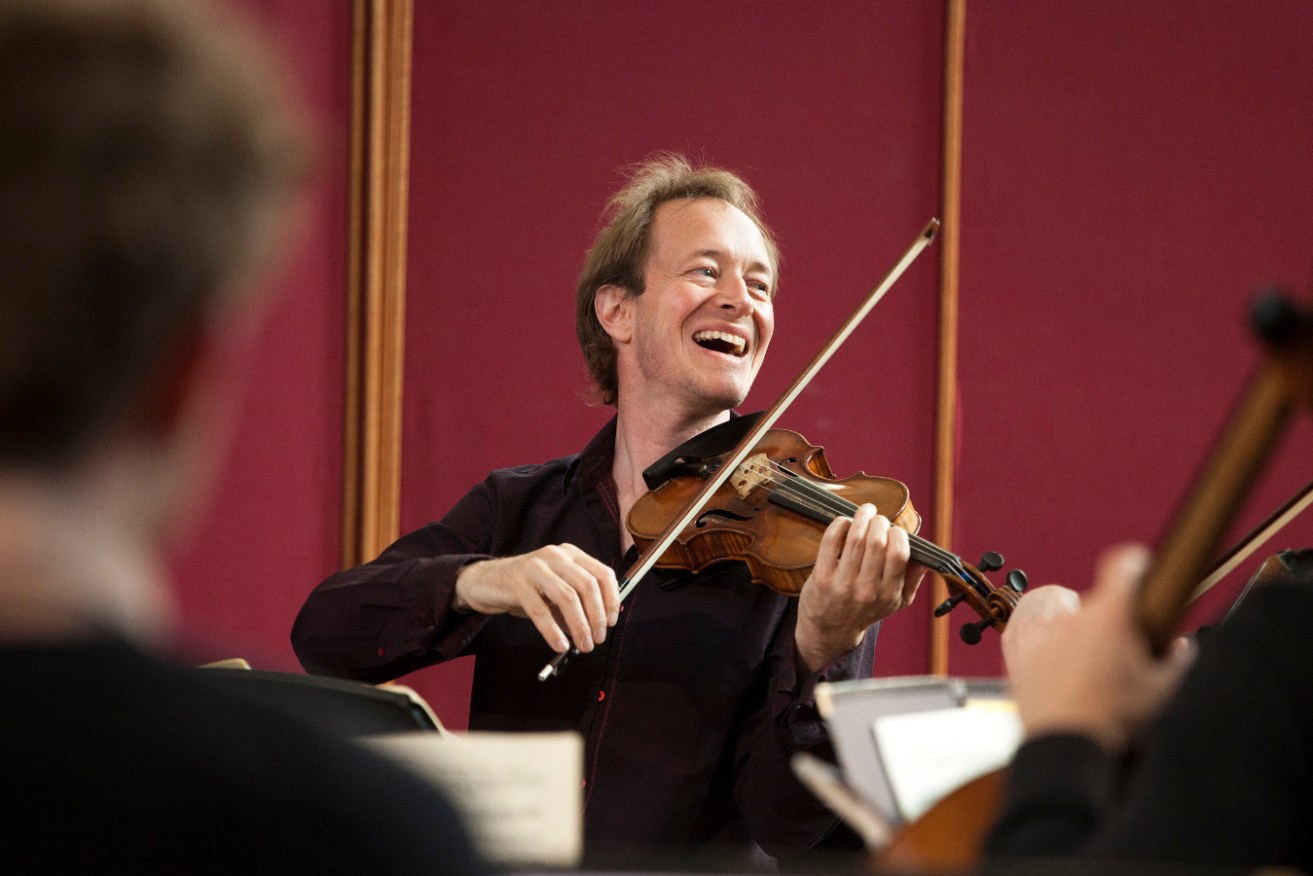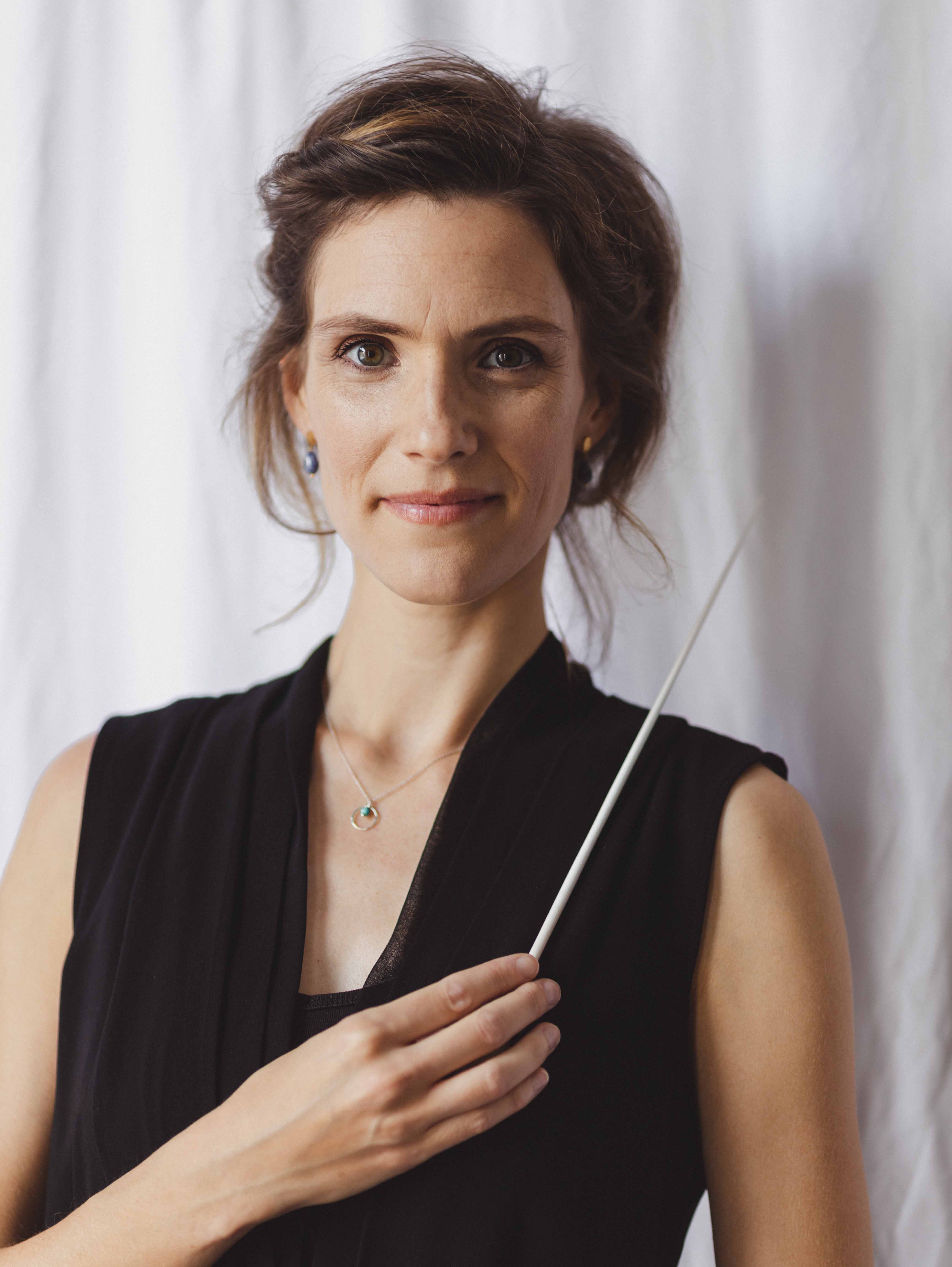Music review: The ASO’s Ecstasy
To hear Anthony Marwood play Korngold’s Violin Concerto genuinely as a concerto and not as film music was revelatory, and so was Chloé van Soeterstède’s conducting in two much-loved works by Debussy and Rachmaninov.

Anthony Marwood played Korngold's concerto as the composer intended it to be. Supplied image: Pia Johnson
If ever there was a concerto to bask under, it is Erich Korngold’s rapturous Violin Concerto in D, Op.35.
Coming from a film composer, it is so big and opulent that it seems to belong more on the widescreen rather than on the concert stage. And when there’s also Debussy’s Prélude à ‘L’Après-midi d’un faune’ and Rachmaninov’s Symphonic Dances on the program, it really does promise to be a night of pure bliss.
Yet the major discovery of this concert was how vastly different the Korngold sounds when it is not played like film music. Anthony Marwood, the British violinist who approaches everything with rare intelligence, had the courage of his artistry to play it like the concerto Korngold intended it to be.
Having earned fame as Hollywood’s most successful film composer in the 1930s with scores such as Captain Blood and The Adventures of Robin Hood, the Austrian émigré wanted to prove to the world that he could still compose serious concert music.
For some reason, violinists to this day seem to often insist on playing his Violin Concerto with inflated, cinematic type expression. Its heraldic, rising main theme does seem to invite that, but there is so much more to this concerto than initially meets the ear.
In an account of great beauty, elegance and classical restraint, Marwood was its saviour. It was like hearing the work for the first time. Comparisons with Mendelssohn came immediately to mind: their melodic effervescence and noble expression are alike in many ways.
Marwood’s silvery sweetness of tone and free-flowing phrases were a marvel to witness. Not to worry that he accidentally dropped his bow while turning the page for the second movement, because his composure and perfectionist touch were everywhere apparent in this and the dashing energy of the finale.
That word ‘beautiful’ keeps coming back with Marwood, and it was clear from his playing that this concerto may have found its loveliest exponent.

Conductor Chloé van Soeterstède. Supplied image
By now, one had also fully noticed that another impressive artist was sharing the stage, the French conductor Chloé van Soeterstède. She welded this performance together with fine elegance and skill.
A moment of unrepentant flag-waving seemed to be imminent in the first piece, American composer Jessie Montgomery’s Banner – here receiving its Australian premiere. However, its sonic representation of the complex fabric of contemporary America makes it much more than this. Copland, Ives and Bernstein are all in there, along with an entertaining parade of marching band music. With rhythmic slaps to the bodies of the violins and cellos, plus a frenetic build-up of energy, it was well played – and well-liked.
A second half, consisting of the Debussy and Rachmaninov, made this a long concert but Van Soeterstède propelled the orchestra to its highest level in both works. These were really fine performances.
She has a very complete conducting technique and a style that allows music to breathe in a satisfyingly natural way.
Prélude à ‘L’Après-midi d’un faune’ was magical. Van Soeterstède gave length to its episodic, drifting moods and empty silences, deepening its mystery. Crucially, all the musicians were thinking and feeling together in this most poetic of orchestral pieces. But this work’s Pan-inspired flute solos are of course the key to everything, and Joshua Batty played them as wonderfully as one could imagine.
More unexpected beauties were on their way in the Symphonic Dances. It may often be viewed as a showpiece on account of its dazzling orchestration, but Rachmaninov infused his last composition with profound foreboding. The Dies Irae chant we hear in the last movement is one obvious manifestation, but so too is the beguiling ‘cold warmth’ that pervades the whole work.
This performance under Van Soeterstède had everything. Primarily, it was again about giving a natural breathing length to phrase while maintaining a sense of movement, together with taking great care over detail. A gorgeous saxophone solo from Damien Hurn stood out particularly, but the whole body of musicians responded at the pinnacle of their ability.
The ASO has been turning in some great performances of late, and this was amongst the very best.
This young conductor has special gifts that are much in demand – many international orchestras are clamouring to sign her on. If the ASO can invite her back, it might be one of their smartest and best moves.
The ASO’s Ecstasy played at the Adelaide Town Hall on November 3.
Anthony Marwood stays in Adelaide as curator of UKARIA 24. This event brings together some of his favourite colleagues and musical works in five special concerts from November 10 to 12.
This article is republished from InReview under a Creative Commons licence. Read the original article.
InReview is an open access, non-profit arts and culture journalism project. Readers can support our work with a donation. Subscribe to InReview’s free weekly newsletter here.
![]()




